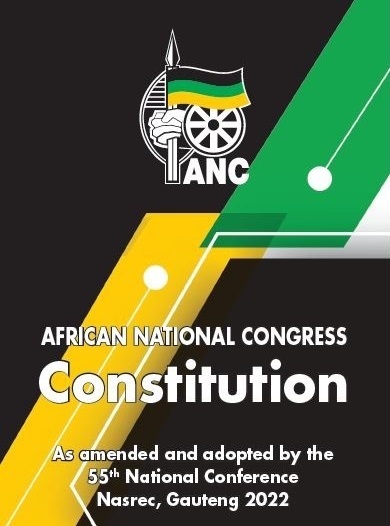The African National Congress Youth League (ANCYL), the only credible voice of the downtrodden youth of South Africa and home to many young and vulnerable women, remains extremely worried by the unprecedented increase in Gender Based Violence (GBV), which in the recent past has manifested itself in the worst form through killing of young girls. It is reported that South Africa has one of the highest incidences of domestic violence in the world and that domestic violence is the most common and widespread human rights abuse in South Africa. This cannot be read and understood without taking into consideration South Africa’s historical injustices that has confined many black women to poverty and unemployment with the inability to move out of oppressed situations. Every day, women are murdered, physically and sexually assaulted, threatened and humiliated by their partners, within their own homes. Organisations estimate that one out of every six women in South Africa is regularly assaulted by her partner. In at least 46 per cent of cases, the men involved also abuse the children living with the woman.
As an organization that has always stood as a voice against persecution of women in general and young women in particular, we are also deeply frustrated by the unfortunate reality that it is difficult to get reliable statistics on violence against women in South Africa. Although the number of reported cases is very high, many cases go unreported and society only finds out about them once they have exploded into horrific incidents like that of murder. The recording system of the South African Police Services is also not helpful because it doesn’t keep separate statistics on assault cases perpetrated by husbands or boyfriends, than those of general assault.
The gendered nature of domestic violence sees a constant number of women being murdered by their intimate male partners. Lack of statistical information on this form of killing makes it very hard to measure the extent of the scourge but newspaper reports on this issue, leave little to one’s imagination. These killings demonstrate the culture of male violence against women and sexism that still pervades our society. Women have fought and succeeded in getting many basic rights yet in the private sphere of their homes, the inequality between men and women is still a battleground. The Department of Justice estimates that 1 out of every four South African women are survivors of domestic violence.
Men, women and people that transit genders in South Africa are impacted by violence in multiple and intersecting ways. South Africa’s rate of rape, as a particular form of gender-based violence has been found to be one of the highest in the world. In a cross-sectional study in three South African districts in the Eastern Cape and Kwa-Zulu Natal, researchers found that 27.6% of all men had raped a woman or girl, of all the men who were interviewed, almost half (42.4%) had been physically violent to an intimate partner.
A comparative study of rates of female homicide and intimate partner violence between 1999 and 2009 showed that although rates of female homicide per 100,000 had decreased from 24.7 to 12.9, this figure is still five times the global average, and rates of intimate partner femicide had not significantly decreased; researchers highlighted the urgency of these figures for policy-driven prevention
Definition and forms of gender based violence
The terms of GBV and violence against women are often used interchangeably, as most violence against women is gender-based, and most GBV is inflicted by men on women and girls. As the ANCYL, we have been thinking hard about the impact of this conceptualization and its impact in the fight against these crimes. In actual fact, a large section of our organization strongly feels that we must replace these term of Gender Based Violence with Men Slaughter of Women, because the recent past has proven that it is men that kill our young girls like sheep. The discussion continues though!
GBV is a structural problem that is deeply embedded in unequal power relationships between men and women. Such violence is perpetuated by harmful social and cultural expectations about gender roles typically associated with being a woman or being a man, a girl or a boy. It functions as a mechanism for enforcing and sustaining gender inequality. Women and girls who are subjected to violence receive the message that they are worth less than others and that they do not have control over their own lives and bodies. This has direct consequences with respect to their health, employment and participation in social and political life.
Gender versus Sex
Sex refers to the biological and physiological difference between men and women. With the development of technology, it has become increasingly difficult to define sex along the dichotomous lines of male-female only as is made evident by inter-sex individuals. Gender refers to socially constructed identities, this is to recognize that attributes and roles of women and men are products of societal social constructs. All social and cultural meaning attached to biological differences between women and men that results in hierarchical relationships between women and men and an unequal distribution of power and rights that favors men and disadvantages is not natural or divine it is a definite product of how society currently organizes itself.
Gender equality and gender based discrimination
Since its inception the ANCYL has been engaged in a struggle for equality and we understand it to imply the equality of women and men without discrimination on the basis of gender. Gender equality encompasses the equality of men and women both formally (before the law) as well as substantively. Gender-based discrimination can in general be understood as any distinction, exclusion or restriction made on the basis of socially constructed gender roles and norms which prevents a person from enjoying human rights.
International definitions of domestic violence and intimate partner violence
Domestic violence means “all acts of physical, sexual, psychological or economic violence within the family or domestic unit or between former or current spouses or partners, whether or not the perpetrator shares or has shared the same residence with the victim. “The two main forms of domestic violence are intimate partner violence between current or former spouses or partners and inter-generation violence which typically occurs between parents”
Intimate partner violence is defined as behavior by an intimate partner that causes physical, sexual or psychological harm, including acts of physical aggression, sexual coercion, psychological abuse and controlling behaviors. (It) covers violence by both current and former spouses and other intimate partners.
Political Economics of Gender Based Violence
No country can afford gender-based violence. In Bangladesh for example, the costs of gender-based violence are estimated at 2.1 percent of the country’s GDP. Each day, violence stops a girl from going to school and prevents a woman from taking a job, compromising their future and the economic and social development of their communities.
In 2014 a research paper by KPMG reported that gender-based violence (GBV) costs the South African economy a staggering R28.4-billion to R42.2-billion a year. The report said the cost could be as much as 0.9% to 1.3% of South Africa’s annual gross domestic product (GDP).
Based on a prevalence rate of 20% – an assumption that one in five women experience an incident of gender-based violence each year – it puts the cost to the country at least R28.4-billion a year. This, the report notes, is enough to either provide wage subsidies for 100% of unemployed youth, build half a million RDP houses, or provide national healthcare to a quarter of the South African population.
Some of the most comprehensive studies, in developed and developing countries estimate the cost of violence to be between 1% and 2% of GDP, and these are widely accepted to be underestimates, given the conservatism of the methodology and the gross under-reporting of violence.
Gender based violence and HIV/AIDS
In the last two decades, women have become the face of HIV/AIDS in sub-Saharan Africa, as 61 percent of people living with the virus in the region are female. The highest rates of HIV/AIDS infections among 15-to-49-year-old women occur in southern Africa, particularly in Botswana, Lesotho, Swaziland, and South Africa.
According to UNAIDS, women who have experienced violence are up to three times more likely to be infected with HIV than those who have not. Country statistics compiled by the United Nations show that younger women in Africa are more likely to experience physical or sexual violence than older women, generally from an intimate partner.
For example; 7 years ago, the South African HIV and sexual violence study observed that, among 15-to-19-year-olds, 28 percent of males and 27 percent of females believed that a girl did not have the right to refuse sex with her boyfriend. And, 55 percent of males and 54 percent of females thought that “sexual violence does not include forcing sex with someone you know.” Unfortunately not much has changed since, these mindsets have not shifted significantly.
Gender Based Violence Policy Mandates
South Africa has a arsenal of progressive laws on domestic violence and sexual assault. Within the South African Constitution: “Everyone has the right to freedom and security of person, that includes the right to be free from violence from either public and private sources.” The constitution also takes time to highlight that South Africa is based on “non-sexism” values.
As a generation of young activists, we are mindful of the teaching of Karl Marx, when he taught us that, “Philosophers have hitherto only interpreted the world in various ways; the point is to change it.” and as result we do not give the above analysis to map a way forward in order for us to change the status quo. Amongst the many other struggles which must be waged daily in our lives, as the ANCYL we make the following recommendation as tools to assist us fight against Gender Based Violence:
Recommendations
In many surveys community members have suggested the following as recommendations to curbing domestic violence:
- Improve visibility of social workers
- Create jobs opportunities for women so that they do not stay in abusive situations because of their socio-economic status.
- Encourage reporting of cases by ensuring protection of victims and informing them of their rights
- Government must initiate more programmes geared specifically to teach young men on abuse
- Foster good working relations between communities, civil society and government so as to curb gender based violence
- Stop police corruption and collusions with perpetrators so as to restore faith of communities in the criminal justice system
- Kill the stigma that surrounds gender based violence by improving and increasing advocacy on the subject matter in communities
- Increased police presence in informal settlements
- Increase safe houses for women, children, the elderly and people living with disability.
- Wage a war against abuse of drugs and alcohol in our communities so as to increase the rate of gender based violence due to drug influence
- Initiation of creative safety measures for women to use when in imminent danger
The implementation of these recommendations is what we must fight for side by side with all progressive forces.
End Gender Based Violence! Smash Patriarchy!
Cde Thandi Moraka is the Deputy Secretary General of the ANC Youth League





